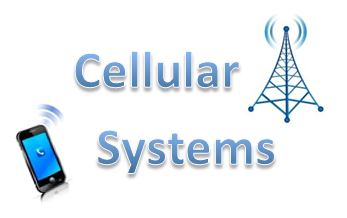Cellular Systems
Cellular systems implements Space Division Multiplexing Technique (SDM). Each transmitter is called a base station and can cover a fixed area called a cell. This area can vary from few meters to few kilometers.

Mobile network providers install several thousands of base stations each with a smaller cell instead of using power full transmitters with large cells because, when the cell size is small we can have the following advantages:
1. Higher capacity
Smaller the size of the cell more the number of concurrent users i.e. huge cells do not allow for more concurrent users.
2. Less transmission power
Huge cells require a greater transmission power than small cells.
3. Local interference only
For huge cells there are a number of interfering signals, while for small cells there is limited interference only.
4. Robustness
As cellular systems are decentralized, they are more robust against the failure of single components.
Disadvantages of Cellular Systems
Some of the disadvantages of cellular systems are:
1. Infrastructure needed
Small cells require a complex infrastructure to connect all base station. The infrastructure required includes switches for call forwarding, location registers etc.
2. Handover needed
The mobile station has to perform a handover when changing from one cell to another very frequently.
3. Frequency planning
To avoid interference, frequency spectrum should be distributed properly with a very less range of frequency spectrum.
Average Acceleration Calculator
Average acceleration is the object's change in speed for a specific given time period. ...
When an object falls into the ground due to planet's own gravitational force is known a...
In Mathematics, the permutation can be explained as the arrangement of objects in a particular order. It is an ordered...
A rectangle can be explained as a 4-sided quadrilateral which contains equal opposite sides. In a rectangle
A three sided polygon which has three vertices and three angles is called a triangle. Equilateral triangle...






